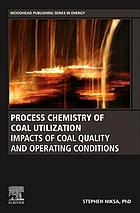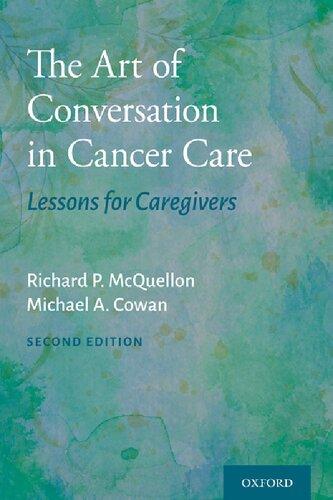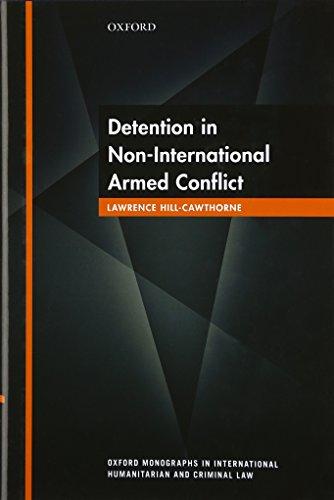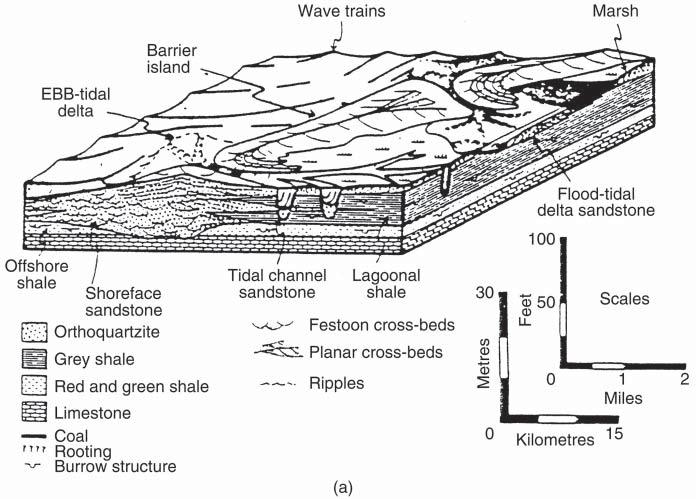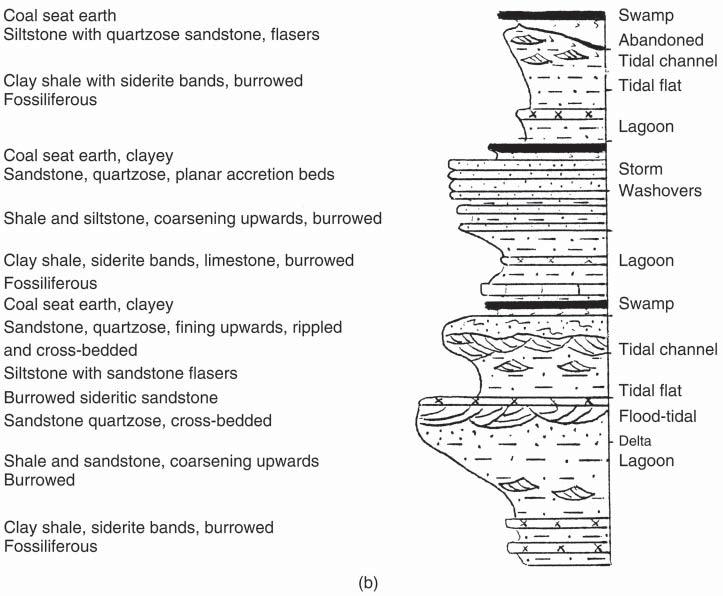CoalGeology
CoalGeology
ThirdEdition
LarryThomas
RadcliffeHouse 51,MonmouthRoad
Abergavenny
UK,NP75HP
ThisThirdeditionfirstpublished2020 ©2020JohnWiley&SonsLtd.
Wiley-Blackwell;2edition(November5,2012)9781119990444
WileyIndia,FirstEdition9788126533008
Allrightsreserved.Nopartofthispublicationmaybereproduced,storedinaretrievalsystem,ortransmitted,inany formorbyanymeans,electronic,mechanical,photocopying,recordingorotherwise,exceptaspermittedbylaw. Adviceonhowtoobtainpermissiontoreusematerialfromthistitleisavailableathttp://www.wiley.com/go/ permissions.
TherightofLarryThomastobeidentifiedastheauthorofthisworkhasbeenassertedinaccordancewithlaw.
RegisteredOffice(s)
JohnWiley&Sons,Inc.,111RiverStreet,Hoboken,NJ07030,USA
JohnWiley&SonsLtd,TheAtrium,SouthernGate,Chichester,WestSussex,PO198SQ,UK
EditorialOffice
TheAtrium,SouthernGate,Chichester,WestSussex,PO198SQ,UK
Fordetailsofourglobaleditorialoffices,customerservices,andmoreinformationaboutWileyproductsvisitusat www.wiley.com.
Wileyalsopublishesitsbooksinavarietyofelectronicformatsandbyprint-on-demand.Somecontentthatappears instandardprintversionsofthisbookmaynotbeavailableinotherformats.
LimitofLiability/DisclaimerofWarranty
Whilethepublisherandauthorshaveusedtheirbesteffortsinpreparingthiswork,theymakenorepresentationsor warrantieswithrespecttotheaccuracyorcompletenessofthecontentsofthisworkandspecificallydisclaimall warranties,includingwithoutlimitationanyimpliedwarrantiesofmerchantabilityorfitnessforaparticular purpose.Nowarrantymaybecreatedorextendedbysalesrepresentatives,writtensalesmaterialsorpromotional statementsforthiswork.Thefactthatanorganization,website,orproductisreferredtointhisworkasacitation and/orpotentialsourceoffurtherinformationdoesnotmeanthatthepublisherandauthorsendorsethe informationorservicestheorganization,website,orproductmayprovideorrecommendationsitmaymake.This workissoldwiththeunderstandingthatthepublisherisnotengagedinrenderingprofessionalservices.Theadvice andstrategiescontainedhereinmaynotbesuitableforyoursituation.Youshouldconsultwithaspecialistwhere appropriate.Further,readersshouldbeawarethatwebsiteslistedinthisworkmayhavechangedordisappeared betweenwhenthisworkwaswrittenandwhenitisread.Neitherthepublishernorauthorsshallbeliableforany lossofprofitoranyothercommercialdamages,includingbutnotlimitedtospecial,incidental,consequential,or otherdamages.
LibraryofCongressCataloging-in-PublicationData
Names:Thomas,Larry(LarryP.),author.
Title:Coalgeology/LarryThomas.
Description:Thirdedition.|Hoboken,NJ:Wiley,2020.|Includesindex.
Identifiers:LCCN2020001898(print)|LCCN2020001899(ebook)|ISBN 9781119424130(hardback)|ISBN9781119424123(adobepdf)|ISBN 9781119424260(epub)
Subjects:LCSH:Coal–Geology.
Classification:LCCTN802.T472020(print)|LCCTN802(ebook)|DDC 553.2/4–dc23
LCrecordavailableathttps://lccn.loc.gov/2020001898
LCebookrecordavailableathttps://lccn.loc.gov/2020001899
CoverDesign:Wiley
CoverImage:©EvgenyMiroshnichenko/iStock.com
Setin9.5/12.5ptSTIXTwoTextbySPiGlobal,Chennai,India
PrintedandboundbyCPIGroup(UK)Ltd,Croydon,CR04YY 10987654321
Contents
PrefacetoThirdEdition xv
PrefacetoSecondEdition xvii
PrefacetoFirstEdition xix
ListofAcronyms xxi
1Preview 1
1.1Scope 1
1.2CoalGeology 1
1.3CoalUse 2
1.4Background 2
2OriginofCoal 5
2.1Introduction 5
2.2SedimentationofCoalandCoal-BearingSequences 5
2.2.1DepositionalModels 5
2.2.2TheTraditionalModel 6
2.2.2.1ProdeltaandDeltaFrontFacies 8
2.2.2.2LowerDeltaPlainFacies 8
2.2.2.3UpperDeltaPlainFacies 11
2.2.2.4FluvialFacies 11
2.2.3ModernPeatAnalogues 11
2.2.3.1PalaeobotanicalCompositionofAncientMires 19
2.2.3.2CaseStudies 24
2.2.4SequenceStratigraphy 25
2.2.5FaciesCorrelation 27
2.2.6FaciesMaps 29
2.2.6.1SeamSplitting 31
2.2.6.2Washouts 34
2.2.6.3FloorRolls 34
2.2.6.4CoalSeamThicknessVariations 35
2.2.6.5Interburden/OverburdenThickness 37
2.2.6.6CoalSeamQualityVariations 38
2.3StructuralEffectsonCoal 40
2.3.1SyndepositionalEffects 40
2.3.1.1MicrostructuralEffects 40
2.3.1.2MacrostructuralEffects 41
2.3.2Post-DepositionalEffects 44
2.3.2.1Jointing/CleatsinCoal 44
2.3.2.2Faulting 45
2.3.2.3Folding 50
2.3.2.4IgneousAssociations 52
2.3.2.5MineralPrecipitates 53
3AgeandOccurrenceofCoal 57
3.1Introduction 57
3.2PlateTectonics 57
3.3Stratigraphy 61
3.4AgeandGeographicalDistributionofCoal 64
3.4.1UnitedStatesofAmerica 67
3.4.2Canada 74
3.4.3Europe 75
3.4.3.1Albania 75
3.4.3.2Austria 75
3.4.3.3Belgium 75
3.4.3.4Bosnia 75
3.4.3.5Bulgaria 75
3.4.3.6CzechRepublic 75
3.4.3.7Denmark 76
3.4.3.8France 76
3.4.3.9Germany 76
3.4.3.10Georgia 76
3.4.3.11Greece 77
3.4.3.12Greenland 77
3.4.3.13Holland 77
3.4.3.14Hungary 77
3.4.3.15Ireland 77
3.4.3.16Italy 77
3.4.3.17Kosovo 77
3.4.3.18Montenegro 78
3.4.3.19Poland 78
3.4.3.20Portugal 78
3.4.3.21Romania 78
3.4.3.22Serbia 78
3.4.3.23Spain 79
3.4.3.24Spitzbergen 79
3.4.3.25Sweden 79
3.4.3.26Turkey 79
3.4.3.27UnitedKingdom 79
3.4.4Africa 80
3.4.4.1Angola 80
3.4.4.2Botswana 80
3.4.4.3Cameroon 81
3.4.4.4Egypt 81
3.4.4.5Ethiopia 81
3.4.4.6MalagasyRepublic 81
3.4.4.7Malawi 81
3.4.4.8Mali 81
3.4.4.9Morocco 81
3.4.4.10Mozambique 82
3.4.4.11Namibia 82
3.4.4.12Niger 82
3.4.4.13Nigeria 82
3.4.4.14SouthAfrica 82
3.4.4.15Swaziland 83
3.4.4.16Tanzania 83
3.4.4.17Zaire 83
3.4.4.18Zambia 83
3.4.4.19Zimbabwe 83
3.4.5TheIndianSubcontinent 84
3.4.5.1Afghanistan 84
3.4.5.2Bangladesh 84
3.4.5.3India 84
3.4.5.4Iran 85
3.4.5.5Pakistan 85
3.4.6CentralandSouthAmerica 85
3.4.6.1Argentina 85
3.4.6.2Bolivia 86
3.4.6.3Brazil 86
3.4.6.4Chile 86
3.4.6.5Colombia 87
3.4.6.6CostaRica 87
3.4.6.7Ecuador 87
3.4.6.8Mexico 87
3.4.6.9Peru 87
3.4.6.10Uruguay 88
3.4.6.11Venezuela 88
3.4.7CommonwealthofIndependentStates 88
3.4.7.1Kazakhstan 88
3.4.7.2RussianFederation 88
3.4.7.3Tajikistan 89
3.4.7.4Ukraine 89
3.4.7.5Uzbekistan 89
3.4.8FarEast 89
3.4.8.1Brunei 89
3.4.8.2DemocraticRepublicof(North)Korea 90
3.4.8.3Indonesia 90
3.4.8.4Japan 91
3.4.8.5Laos 91
3.4.8.6Malaysia 91
3.4.8.7Mongolia 91
3.4.8.8Myanmar(Burma) 92
3.4.8.9People’sRepublicofChina 92
3.4.8.10People’sRepublicofVietnam 93
3.4.8.11Philippines 93
3.4.8.12Republicof(South)Korea 94
3.4.8.13Taiwan 94
3.4.8.14Thailand 94
3.4.9Australasia 95
3.4.9.1Australia 95
3.4.9.2NewZealand 96
3.4.9.3Antarctica 96
4CoalasaSubstance 97
4.1PhysicalDescriptionofCoal 97
4.1.1MacroscopicDescriptionofCoal 97
4.1.1.1HumicCoals 97
4.1.1.2SapropelicCoals 101
4.1.2MicroscopicDescriptionofCoal 102
4.1.3MineralContentofCoals 106
4.1.4CoalPetrography 113
4.2Coalification(Rank) 116
4.2.1Coalification 116
4.2.2CausesofCoalification 118
4.2.2.1Temperature 120
4.2.2.2Time 120
4.2.2.3Pressure 120
4.2.2.4Radioactivity 121
4.3CoalQuality 121
4.3.1ChemicalPropertiesofCoal 122
4.3.1.1BasisofAnalyticalData 122
4.3.1.2ProximateAnalysis 123
4.3.1.3UltimateAnalysis 125
4.3.1.4OtherAnalysis 126
4.3.2CombustionPropertiesofCoal 127
4.3.2.1CalorificValue 127
4.3.2.2AshFusionTemperatures 128
4.3.2.3CakingTests 128
4.3.2.4CokingTests 129
4.3.3PhysicalPropertiesofCoal 131
4.3.3.1MechanicalStrength 131
4.3.3.2Density 132
4.3.3.3HardnessandGrindability 132
4.3.3.4AbrasionIndex 133
4.3.3.5ParticleSizeDistribution 133
4.3.3.6Float–SinkTests 133
4.3.4CoalOxidation 135
4.4ClassificationofCoals 136
4.4.1NorthAmerica 136
4.4.2UnitedKingdom 136
4.4.3Europe 137
4.4.4Australia 146
4.4.5SouthAfrica 146
4.4.6UnitedNations 146
4.4.7Russia 148
4.4.8People’sRepublicofChina 149
5CoalSamplingandAnalysis 151
5.1CoalSampling 151
5.1.1In-SituCoalSampling 151
5.1.1.1GrabSamples 151
5.1.1.2ChannelSamples 151
5.1.1.3PillarSamples 154
5.1.1.4CoreSamples 154
5.1.1.5CuttingsSamples 155
5.1.1.6SpecimenSamples 155
5.1.1.7BulkSamples 156
5.1.1.8SampleStorage 156
5.1.2Ex-SituSampling 157
5.2CoalAnalysis 162
5.2.1Outcrop/CoreSamples 162
5.2.2BulkSamples 162
5.2.3Ex-SituSamples 162
6CoalExplorationandDataCollection 169
6.1Introduction 169
6.2FieldTechniques 169
6.2.1OutcropMapping 172
6.2.2GlobalPositioningSystem 179
6.2.3PortablePersonalComputers 179
6.2.4RemoteSensing 180
6.2.4.1SatelliteImagery 180
6.2.4.2AirborneImagery 181
6.3Drilling 183
6.3.1OpenholeDrilling 184
6.3.2CoreDrilling 188
6.3.3PortableDrilling 189
6.3.4CoreandOpenholeLogging 190
6.3.4.1CoreLogging 190
6.3.4.2OpenholeLogging 193
6.4GeotechnicalProperties 194
6.4.1Strength 195
6.4.2Weathering 196
6.4.3TextureandStructure 196
6.4.4Colour 196
6.4.5GrainSize 198
x Contents
6.4.6TotalCoreRecovery 198
6.4.7SolidCoreRecovery 198
6.4.8RockQualityDesignation 198
6.4.9FractureSpacingIndex 198
6.4.10FractureLogging 199
6.4.11RockMassRating 201
6.5ComputerApplications 201
7CoalResourcesandReserves 207
7.1Introduction 207
7.2CoalResourcesandReservesClassification 208
7.2.1Australia 209
7.2.1.1CoalResources 209
7.2.1.2CoalReserves 211
7.2.2Canada 211
7.2.3Europe(IncludingtheUK) 212
7.2.4SouthAfrica 213
7.2.5UnitedNations 213
7.2.6UnitedStatesofAmerica 216
7.2.7RussianFederation 219
7.2.8People’sRepublicofChina 222
7.2.9India 222
7.2.10OtherCountries 224
7.3ReportingofResources/Reserves 225
7.3.1CoalResourcesandReserves 225
7.3.2CoalResourcesandReservesMaps 226
7.3.3CalculationofCoalResources 227
7.3.3.1In-SituTonnageCalculations 227
7.3.3.2GeostatisticsandComputerModelling 229
7.3.3.3OpencastCoalMining 232
7.3.3.4GeologicalLosses 233
7.3.3.5ReservesReporting 235
7.3.3.6ReserveEconomics 235
7.4WorldCoalReservesandProduction 235
7.4.1WorldCoalReserves 235
7.4.2WorldCoalProduction 237
7.4.2.1CoalProductionStatistics 237
7.4.2.2RegionalProductionandConsumption 241
7.4.2.3Reserves/ProductionRatio 242
8GeophysicsofCoal 243
8.1Introduction 243
8.2PhysicalPropertiesofCoal-BearingSequences 244
8.2.1Density 244
8.2.2SeismicVelocity 244
8.2.3SeismicReflectionCoefficients 245
8.2.4MagneticSusceptibility 245
8.2.5ElectricalConductivity 245
8.2.6RadiometricProperties 245
8.3SurfaceGeophysicalMethods 246
8.3.1SeismicSurveys 246
8.3.1.1SeismicReflectionSurveys 246
8.3.1.2SeismicRefractionSurveys 256
8.3.1.3PassiveSeismicSurveys 257
8.3.2GravitySurveys 257
8.3.3MagneticSurveys 259
8.3.4ElectricalMethods 262
8.3.4.1ElectricalResistivityMethods 262
8.3.4.2Ground-PenetratingRadarMethods 262
8.3.4.3ElectromagneticSurveys 263
8.3.5RadioactiveMethods 264
8.4UndergroundGeophysicalMethods 264
8.4.1In-SeamSeismicSurveys 264
8.4.2UndergroundGravitySurveys 269
8.4.3Ground-PenetratingRadarTechniques 269
8.5GeophysicalBoreholeLogging 269
8.5.1RadiationLogs 271
8.5.1.1Gamma-RayLog 271
8.5.1.2DensityLog 273
8.5.1.3NeutronLog 274
8.5.1.4GammaSpectrometry 276
8.5.2CalliperLog 276
8.5.3ElectricLogs 277
8.5.4DipmeterLog 277
8.5.5SonicLog 278
8.5.6AcousticScanningTools 279
8.5.7TemperatureLog 280
8.5.8AdvancedInterpretation 282
9HydrogeologyofCoal 289
9.1Introduction 289
9.2TheNatureofGroundwaterandSurfaceFlow 289
9.2.1SurfaceWater 289
9.2.2Groundwater 290
9.3HydrogeologicalCharacteristicsofCoalsandCoal-BearingSequences 292
9.4CollectionandHandlingofHydrogeologicalData 295
9.4.1SurfaceWater 295
9.4.2Groundwater 295
9.5GroundwaterInflowsinMines 298
9.5.1DewateringofOpen-pitMines 299
9.5.2DewateringofUndergroundMines 306
9.5.3WaterQuality 307
9.6GroundwaterRebound 307
10GeologyandCoalMining 311
10.1Introduction 311
10.2UndergroundMining 312
10.2.1GeologicalFactors 313
10.2.2MiningMethods 314
10.2.2.1LongwallMining 314
10.2.2.2Room-and-PillarMining 316
10.2.2.3StressFields 318
10.2.2.4CoalBursts 326
10.2.2.5StrataandAirTemperatures 327
10.2.2.6SpontaneousCombustion 328
10.3SurfaceMining 328
10.3.1GeologicalFactors 328
10.3.2MiningEquipment 330
10.3.2.1Dragline 330
10.3.2.2PoweredShovels 331
10.3.2.3BucketwheelExcavators 334
10.3.3SurfaceMiningMethods 335
10.3.3.1StripMining 335
10.3.3.2OpencastorOpen-pitMining 335
10.3.3.3HighwallMining 338
10.4CoalProduction 339
10.4.1UndergroundCoalProduction 340
10.4.2SurfaceCoalProduction 340
11CoalasanAlternativeEnergySource 343
11.1Introduction 343
11.2GasinCoal 343
11.2.1Coal-bedMethane 345
11.2.1.1Coal-bedMethaneGeneration 345
11.2.1.2Coal-bedMethaneRetention 346
11.2.1.3Coal-bedMethaneProduction 349
11.3UndergroundCoalGasification 365
11.3.1UndergroundCoalGasification:TheCaseForandAgainst 365
11.3.2UndergroundCoalGasificationTechnology 366
11.3.2.1CoalGasificationReactions 366
11.3.3GlobalDevelopmentofUndergroundCoalGasification 373
11.4CoalasaLiquidFuel 375
11.4.1PetroleumPotentialofCoal 375
11.4.2CoalPropertiesasanOil-SourceRock 375
11.4.3CoalLiquefactionTechnology 378
11.4.4FutureDevelopmentofCoalLiquefaction 379
11.4.5Coal-SourcedOilandGasOccurrences 381
12CoalUseandtheEnvironment 385
12.1Introduction 385
12.2Coalmining 386
12.2.1EffectsonWaterSupply 387
12.2.1.1SurfaceWater 387
12.2.1.2UndergroundWater 387
12.2.2ContaminationofMineWaters 387
12.2.3OtherWaterPollution 391
12.2.4Run-off,Erosion,andSedimentation 391
12.2.5SpoilDumping 392
12.2.6SpontaneousCombustion 396
12.2.7DustSuppression 397
12.2.8Subsidence 398
12.3CoalUse 401
12.3.1ElectricityGeneration 404
12.3.1.1Emissions 405
12.3.1.2FlueGasDesulfurisation 409
12.3.1.3OtherEmissionControls 410
12.3.1.4Fluidised-BedCombustion 411
12.3.2OtherMajorUsers 413
12.3.2.1IronandSteelProduction 413
12.3.2.2IndustrialUse 414
12.3.2.3DomesticUse 415
12.3.3CoalTransportation 415
12.4Health 415
12.5CarbonCaptureandStorage 416
12.6EnvironmentalRegulations 418
12.6.1Introduction 418
12.6.2UnitedNationsEconomicCommissionforEuropeConventions 419
12.6.3EuropeanUnion 420
12.6.4WorldBank 420
12.6.5KyotoProtocol 420
12.6.6CopenhagenAccord 421
12.6.7DurbanPlatformforEnhancedAction 421
12.6.8ParisAgreement 421
12.7FutureImplications 422
13CoalMarketing 423
13.1Introduction 423
13.2CoalQuality 423
13.3Transportation 425
13.3.1LandTransportation 425
13.3.1.1Conveyors 426
13.3.1.2Road 426
13.3.1.3Rail 427
13.3.2WaterTransportation 428
13.3.2.1Barges 428
13.3.2.2BulkCarriers 429
13.4CoalMarkets 430
13.5CoalContracts 431
13.5.1SpotPurchases 431
13.5.2TermContracts 431
13.5.3IndexedContracts 432
13.6CoalPriceandIndexing 433
AppendixAListofInternationalandNationalStandardsUsedinCoalandCoke AnalysisandEvaluation 435
A.1BritishStandardsInstitution(BS) 435
A.2InternationalOrganizationforStandardization(ISO) 438
A.3ASTMInternational,FormerlyKnownasAmericanSocietyforTestingandMaterials (ASTM) 441
A.4StandardsAssociationofAustralia(AS) 444
A.5NationalStandardsofPeople’sRepublicofChina 446
A.6BureauofIndianStandards 449
A.7StateStandardsofRussia–GOST(GOST = GosudarstvennyyStandart) 451
AppendixBTablesofTrueandApparentDip,SlopeAngles,Gradients,and PercentageSlope 455
AppendixCCalorificValuesExpressedinDifferentUnits 457
AppendixDCoalStatistics 463
AppendixEMethaneUnitsConverter 465
Glossary 467 Bibliography 475 Index 497
PrefacetoThirdEdition
Thefirstandsecondeditionsof CoalGeology haveprovidedthecoalgeologistandthose associatedwiththecoalindustrywiththebackgroundtotheoriginsandcharacteristicsofcoal togetherwithexplorationtechniques,includinggeophysicsandhydrogeology.Detailsof coalminingtechniques,resourcecalculations, alternativeusesofcoal,andenvironmental issueswerealsodescribed.
Althoughbroadlyfollowingthelayoutof thepreviousedition,additionalinformation hasbeenaddedtocoalorigins,geographical distributionofcoal,andcoalexploration. Thechapteroncoalresourcesandreserves hasbeenupdatedwithcurrentresource classifications,togetherwithrecentworld reserves/productionfigures.
Thechapteronthealternativeusesofcoal, particularlycoal-bedandcoalminemethane extraction,havebeenexpandedtoreflectthe increaseinactivityintheseareas.Developmentsinenvironmentalrequirementsand regulationshavealsobeenupdated.
Again,numeroussourcesofinformation havebeenconsulted,themajorityofwhichare
listedinthebibliographysection.International standardsrelatingtocoal,listedinAppendix A,havebeenupdatedandexpandedtoinclude thePeople’sRepublicofChina,India,and Russia,andalistofacronymshasbeenadded toassistthereader.
Iwouldliketothankallthosecolleagues andfriendswhohavehelpedandencouragedmewiththethirdedition.Inparticular, specialthanksareduetoSteveFrankland ofDargoAssociatesLtd,DrGarethGeorge forhisexpertiseonsedimentarysequences, RobEvansforhishelpwithcoalgeophysics, andtothefollowingfortheircontributions andsupport:ProfessorVladimirPavlovic,Dr DavePearsonofPearsonCoalPetrographyand ArgusMediaLtd,aswellasthestaffatJohn Wiley&SonsLtd.
Ialsothankthoseauthorsandorganisations whogavepermissiontoreproducetheirwork, whichisgratefullyacknowledged.
Finally,IwouldliketothankmywifeSuefor hercontinuedsupport,forbearance,andassistancewiththemanuscript.
PrefacetoSecondEdition
Thefirsteditionof CoalGeology hasprovided thecoalgeologistandthoseassociatedwiththe coalindustrywiththebackgroundtotheoriginsandcharacteristicsofcoaltogetherwith explorationtechniquesincludinggeophysics andhydrogeology.Detailsofcoalminingtechniques,resourcecalculations,alternativeuses ofcoalandenvironmentalissueswerealso described.
Althoughbroadlyfollowingthelayoutofthe firstedition,additionalinformationhasbeen addedtocoalorigins,geographicaldistribution ofcoalandcoalexploration.Thechapteron coalresourcesandreserveshasbeenbrought uptodatewithcurrentresourceclassificationstogetherwithrecentworldreserves/ productionfigures.
Thechapterongeophysicsofcoalhasbeen enlargedandthealternativeusesofcoal,in particular,methaneextractionandundergroundcoalgasificationhavebeenexpanded toreflecttheincreaseinactivityintheseareas. Developmentsinenvironmentalrequirements havealsobeenupdated.
Again,numeroussourcesofinformation havebeenconsulted,themajorityofwhichare
listedinthebibliographysection.International Standardsrelatingtocoal,listedinAppendix1, havebeenupdatedandexpandedtoinclude PRChina,IndiaandRussia.
Iwouldliketothankallthosecolleaguesand friendswhohavehelpedandencouragedme withthesecondedition.Inparticular,special thanksareduetoSteveFranklandofDargo AssociatesLtd,RobEvansforhisinvaluable helpwithcoalgeophysics,PaulAhnerinthe U.S.A.forprovidingdataonunderground coalgasification,andtothefollowingfortheir contributionsandsupport,ProfessorVladimir PavlovicofBelgradeUniversity,MikeCoultas, DavePearsonofPearsonCoalPetrography, OracleCoalfieldsplcandRobertsonGeologging,aswellasthestaffatJohnWiley& SonsLtd.
Ialsothankthoseauthorsandorganisations whosepermissiontoreproducetheirworkis gratefullyacknowledged.
FinallyIwouldliketothankmywifeSuefor hersupport,forbearanceandassistancewith themanuscript.
PrefacetoFirstEdition
TheHandbookofPracticalCoalGeology (Thomas1992)wasintendedasabasicguide forcoalgeologiststouseintheireveryday duties,whetheronsite,intheofficeorinstructingothers.Itwasnotintendedasadefinitive workonalloranyparticularaspectofcoal geology,ratherasahandbooktouseasaprecursorto,orinconjunctionwithmorespecific anddetailedworks.
Thisnewvolumeisdesignedtogiveboth thecoalgeologistandothersassociatedwith thecoalindustrybackgroundinformation regardingthechemicalandphysicalproperties ofcoal,itslikelyorigins,itsclassificationand currentterminology.InadditionIhavehighlightedthecurrentlyknowngeographicaldistributionofcoaldepositstogetherwithrecent estimatesofworldresourcesandproduction.
Ihavealsooutlinedtheexplorationtechniques employedinthesearchfor,anddevelopment ofthesecoaldepositsandthegeophysicaland hydrogeologicalcharacteristicsofcoal-bearing sequences,togetherwiththecalculationand categorisationofresources/reserves.
Chaptersaredevotedtotheminingofcoal,to themeansofextractingenergyfromcoalother thanbyconventionalminingtechniques,and totheenvironmentalconcernsassociatedwith theminingandutilisationofcoal.
Alsocoveredisthedevelopmentofcomputer technologyinthegeologicalandminingfields, andthefinalchapterisacondensedaccountof themarketingofcoal,itsuses,transportation andprice.
Manysourcesofinformationhavebeenconsulted,themajorityofwhicharelistedinthe referencesection.Asetofappendicescontains informationofusetothereader.
Iwouldliketothankallthosecolleaguesand friendswhohavehelpedandencouragedme withthebookfromconceptiontocompletion. InparticularspecialthanksareduetoSteve andGhislaineFranklandofDargoAssociates Ltd,AlanOakes,RobEvans,DrKeithBall,ProfessorBrianWilliams,MikeCoultas,Reeves OilfieldServices,IMCGeophysicsLtdand PalladianPublications,aswellasthestaffat JohnWiley&SonsLtd.
Ishouldalsoliketothankthoseauthorsand organisationswhosepermissiontoreproduce theirworkisgratefullyacknowledged.
FinallyIwouldliketothankmyfamilyfor theirsupport,encouragementandassistance withthemanuscript.
LarryThomas
ListofAcronyms
AMDAcidminedrainage
AMMAbandoned-minemethane
ASTMAmericanSocietyforTesting andMaterials
BAPBaliActionPlan
BFBCBubblingfluidised-bed combustion
BOFBasicoxygenfurnace
CBMCoal-bedmethane
CCSCarboncaptureandstorage
CDMCleandevelopmentmechanism
CFBCCirculatingfluidised-bed combustion
CFRCodeofFederalRegulations
CHPCombinedheatandpower
CIMCanadianInstituteforMining, MetallurgyandPetroleum
CMMCoalminemethane
CMMICouncilofMining& MetallurgicalInstitutions
CRIRSCOCommitteeforMineralReserves InternationalReporting Standards
CSGCoalseamgas
EAFElectricarcfurnace
EFGEuropeanFederationof Geologists
EISAEnvironmentalImpactand SocialAssessment
EPAEnvironmentalProtection Agency
FBCFluidised-bedcombustion
FCCCFrameworkConventionon
ClimateChange
FGDFluegasdesulfurisation
GHGGreenhousegas
IGCCIntegratedgasificationcombined cycle
ISPIndianStandardProcedure
JORCJointOreReservesCommittee
LRTAPLong-rangetrans-boundaryair pollution
NAENRussianCodeforPublic ReportingofExploration Results,MineralResources& Reserves
NDCNationallydetermined contribution
NRONationalReportingOrganisation
PCDDsPolychlorinated dibenzo-para-dioxins
PCDFsPolychlorinateddibenzofurans
PERCPan-EuropeanReservesand ResourcesReportingCommittee
PMParticulatematter
PRCPeople’sRepublicofChina
R/PReserves/productionratio
SAMRECSouthAfricanCodefor ReportingofExploration Results,MineralResourcesand Reserves
SAMVALSouthAfricanCodefor ReportingofMineralAsset Valuation
SCRSelectivecatalyticreduction
SECUnitedStatesSecuritiesand ExchangeCommission
SMESocietyforMining,Metallurgy andExploration(USA)
TDSTotaldissolvedsolids
TEOTechnical–economic justification
TERITheEnergyResearchInstitute (India)
UCGUndergroundcoalgasification
UNECEUnitedNationsEconomic CommissionforEurope
UNEPUnitedNationsEnvironment Programme
UNFCUnitedNationsFramework ClassificationforFossilEnergy andMineralResources
UNFCCCUnitedNationsConventionon ClimateChange
USGSUnitedStatesGeologicalSurvey
VALMINAustralianCodeforthePublic ReportingofTechnical AssessmentsandValuationsof MineralAssets
VAMVentilationairmethane
WCAWorldCoalAssociation
WECWorldEnergyCouncil
1.1Scope
Theobjectofthisbookremainsunchanged. Itistoprovidegeologistsandthoseassociated withthecoalindustry,aswellasteachersof coursesoncoalaboutitsgeologyanduses, withabackgroundofthenatureofcoalandits varyingproperties,togetherwiththepractice andtechniquesrequiredinordertocompile geologicaldatathatwillenableacoalsequence underinvestigationtobeultimatelyevaluated intermsofmineabilityandsaleability.Inaddition,thealternativeusesofcoalasasource ofenergytogetherwiththeenvironmental implicationsofcoalusagearealsoaddressed.
Eachofthesesubjectsisamajortopicin itself,andthebookonlycoversabriefreview ofeach,highlightingtherelationshipbetween geologyandthedevelopmentandcommercial exploitationofcoal.
1.2CoalGeology
Coalisauniquerocktypeinthegeological column.Ithasawiderangeofchemicaland physicalproperties,andithasbeenstudied overalongperiodoftime.Thisvolumeis intendedtobeabasicguidetounderstanding thevariationincoalsandtheirmodesoforigin andofthetechniquesrequiredtoevaluatecoal occurrences.
Theepisodesofcoaldevelopmentinthe geologicalcolumnaregiventogetherwiththe principalcoaloccurrencesworldwide.Itis
acceptedthatthisisnottotallyexhaustive,as coaldoesoccurinsmallareasnotindicatedin thefiguresortables.
Thereportingofcoalresources/reservesisan importantaspectofcoalgeology,andinternationalstandardsandguidelinesareinplaceto ensurethecorrectreportingprocedurestobe undertaken.Mostnationalstandardsarenow beingreconciledwiththese,andtheprincipal resources/reservesclassificationsaregiven. Currentestimatesofglobalresourcesand reservesofcoal,togetherwithcoalproduction figures,arelisted.Althoughtheseobviously becomedated,theydoservetoindicatewhere themajordepositsandminingactivitiesare currentlyconcentrated.
Inrelationtotheextractionofcoal,the understandingofthegeophysicalandhydrogeologicalpropertiesofcoalsisanintegralpart ofanycoalminedevelopment,andtheseare reviewedtogetherwiththeprincipalmethods ofminingcoal.Theincreasinguseofcomputer technologyhashadaprofoundimpactongeologicalandminingstudies.Someoftheapplicationsofcomputerstothesearediscussed.
Animportantdevelopmentinrecentyears hasbeentheattemptstousecoalasanalternativeenergysourcebyeitherremovingmethane (CH4 )gasfromthein-situcoalandcoalmines, orbyliquefyingthecoalasadirectfuelsource, orbygasificationofcoalinsituunderground. Thesetechnologiestogetherareparticularlysignificantinareaswhereconventional coalmininghasceasedorwherecoaldeposits aresituatedeitheratdepthsuneconomicto
mineorinareaswhereminingisconsidered environmentallyundesirable.
1.3CoalUse
Theprincipalusesoftradedcoalsworldwide areforelectricitygenerationandsteelmanufacture,withotherindustrialusersanddomesticconsumptionmakinguptheremainder.
Lackofenvironmentalcontrolsintheuse ofcoalinthepasthasledtobothlandand airpollution,aswellasdestructionofhabitat. Modernenvironmentalguidelinesandlegislationarebothrepairingthedamageofthe pastandpreventingareoccurrenceofsuch phenomena.Anoutlineisgivenofthetypes ofenvironmentalconcernsthatexistwhere coalisutilised,togetherwiththecurrentpositionontheimprovementsintechnologyin miningtechniques,industrialprocesses,and electricitygenerationemissions.
Themarketingofcoalisoutlined,together withthecontractualandpricingmechanisms commonlyemployedinthecoalproducer/coal usersituation.
1.4Background
Inmostindustrialcountries,coalhashistoricallybeenakeysourceofenergyandamajor contributortoeconomicgrowth.Intoday’s choiceofalternativesourcesofenergy,industrialisedeconomieshaveseenachangeinthe roleforcoal.
Originally,coalwasusedasasourceofheat andpowerinhomesandindustry.During the1950sand1960scheapoilcurtailedthe growthofcoaluse,buttheuncertaintiesofoil supplyinthe1970sledtoaresumptionincoal consumptionandarapidgrowthininternationalcoaltrade.This,inturn,wasfollowed byanincreasinglyunfavourableimagefor coalasacontributortogreenhousegas(GHG) emissionsandhadbeencloselyidentified withglobalwarming.Thecoalindustryhas
respondedpositivelytothisaccusation,and modernindustrialplantshavemuchlower emissionslevelsthaninpreviousyears.Currentfiguresshowthatcoalaccountsfor45%of allcarbondioxide(CO2 )emissions.
Theworldconsumptionoffossilfuels, andthusemissionsofCO2 ,willcontinueto increase,andfossilfuelsstillmeetaround 86%ofprimaryenergyrequirements.The objectiveoftheUnitedNationsFramework ConventiononClimateChange(UNFCCC) signedatthe1992EarthSummitinRiode Janeiroisto‘stabiliseGHGconcentrationsin theatmosphereatalevelthatwouldprevent dangerousanthropogenicinterferencewith theclimatesystem’.Nosetlevelswereidentified,butemissionsindevelopedcountries wereexpectedtobereducedto1990levels.A seriesofannualmeetingsbytheinternational bodyundertheUNFCCC,theConferenceof theParties(COP),havetakenplace,notably COP-3inKyoto,Japan,in1997,atwhichthe KyotoProtocolwasdrawnup,settingemissionstargetsforallthecountriesattending. However,governmentministersatCOP-6in TheHagueinNovember2000failedtoagree onthewayforwardtomeettheKyotoProtocol targets.ThisplacedthewholeoftheKyoto Protocol’sambitiousandoptimisticplanfora globalagreementonGHGemissionsreduction inanuncertainposition.Thiscouldbeanindicationofoverambitiousgoalsratherthanany failureinthenegotiations,anditisuptothe partiesconcernedtoestablisharealisticsetof targetsforemissionsreductionsinthefuture. TheCopenhagenAccordin2009reinforced theneedforemissionsreductions,together withprovidingfinancialassistancetohelp developingcountriescutcarbonemissions. In2015,attheParisAgreement,partiesto theUNFCCCreachedagreementtocombat climatechangeandtoaccelerateandintensify theactionsandinvestmentsforasustainable low-carbonfuture.Thiswasthefirstlegally bindingglobalclimatedeal.
Itremainsafactthatmanyeconomiesstill dependoncoalforasignificantportionof
theirenergyneeds.Coalcurrentlyaccounts for28%oftheworld’sconsumptionofprimaryenergy,and,importantly,coalprovides fuelforthegenerationofaround39%of thetotaloftheworld’selectricity.In2018, internationallytradedcoalwas1169Mt,the bulkofwhichwassteamorthermalcoal. Globally,5.6Gtofcoalwasconsumedin2016 (BPplc2017).
Coalreservesarecurrentlyestimatedtobe around900Gt,andtheworldcoalreserves toproductionratioisnearlysixtimesthat foroilandfourtimesthatfornaturalgas.
This,togetherwiththegloballydemocratic distributionandsecurenatureofcoaldeposits, willensurethatcoalwillcontinuetobea majorenergyresourceforsomeconsiderable timetocome.
Withthisscenarioinmind,thisvolume isintendedtoassistthoseassociatedwith thecoalindustry,aswellaseducationalists andthoserequiredtomakeeconomicand legislativedecisionsaboutcoal.
Thephilosophyandviewsexpressedin thisbookarethoseoftheauthorandnotthe publisher.
OriginofCoal
2.1Introduction
Sedimentarysequencescontainingcoalorpeat bedsarefoundthroughouttheworldandrange inagefrommiddlePalaeozoictoRecent.
Coalsaretheresultoftheaccumulation ofvegetabledebrisinaspecialisedenvironmentofdeposition.Suchaccumulations havebeenaffectedbysynsedimentaryand post-sedimentaryinfluencestoproducecoals ofdifferingrankanddifferingdegreesof structuralcomplexity,thetwobeingclosely interlinked.Theplanttypesthatmakeupcoals haveevolvedovergeologicaltime,providinga varietyoflithotypesincoalsofdifferingages.
Remarkablesimilaritiesexistincoal-bearing sequences,dueforthegreaterparttothe particularsedimentaryassociationsrequired togenerateandpreservecoals.Sequencesof vastlydifferentagesfromareasgeographically separatehaveasimilarlithologicalframework andcanreactinsimilarfashionsstructurally.
Itisafact,however,thattheoriginofcoalhas beenstudiedforoveracenturyandthatnoone modelhasbeenidentifiedthatcanpredictthe occurrence,development,andtypeofcoal.A varietyofmodelsexistthatattempttoidentify theenvironmentofdeposition,butnosingle onecanadequatelygiveasatisfactoryexplanationforthecyclicnatureofcoalsequences, thelateralcontinuityofcoalbeds,andthe physicalandchemicalcharacteristicsofcoals. However,theadventofsequencestratigraphy
hasrecognisedthepatternofgeologicalevents leadingtothedifferentphasesofdeposition anderosionwithincoal-bearingsequences.
2.2SedimentationofCoal andCoal-BearingSequences
Duringthelast90years,interesthasgrown rapidlyinthestudyofsedimentologicalprocesses,particularlythosecharacteristicof fluviatileanddeltaicenvironments.Itisthese, inparticular,thathavebeencloselyidentified withcoal-bearingsequences.
Itisimportanttogiveconsiderationbothto therecognitionoftheprincipalenvironments ofdepositionandtotherecentchangesin emphasisregardingthosephysicalprocesses required,inordertoproducecoalsofeconomic value.Inaddition,theunderstandingofthe shape,morphology,andqualityofcoalseams isoffundamentalsignificanceforthefuture planningandminingofcoals.Althoughthe genesisofcoalhasbeenthesubjectofnumerousstudies,modelsthatareusedtodetermine theoccurrence,distribution,andqualityof coalareoftenstilltooimprecisetoallowsuch accuratepredictions.
2.2.1DepositionalModels
Therecognitionofdepositionalmodelsto explaintheoriginofcoal-bearingsequences
andtheirrelationshiptosurroundingsedimentshasbeenachievedbyacomparison oftheenvironmentsunderwhichmodern peatsareformedandancientsequences containingcoals.
Ceciletal.(1993)suggestedthatthecurrentmodelsoftenconcentrateonthephysical descriptionofthesedimentsassociatedwith coalratherthanconcentratingonthegeologicalfactorsthatcontrolthegenesisofcoalbeds. Theyalsosuggestthatmodelsthatcombine sedimentationandtectonicswitheustasyand chemicalchangehavenotyetbeenfullydeveloped.Suchintegratedmodelswouldgivean improvedexplanationofphysicalandchemical processesofsedimentation.Itshouldbenoted thattheuseofsequencestratigraphyinfacies modellingisbasedonphysicalprocessesand doesnottakeintoaccountchemicalstratigraphy.Thiswillproveadeficiencywhenpredictingtheoccurrenceandcharacterofcoalbeds.
Thetraditionaldepositionalmodelused bynumerousworkerswasbasedonthe ‘cyclothem’,aseriesoflithotypesoccurringin repeated‘cycles’.Weller(1930)andWanless andWeller(1932)remarkedonthesimilarity ofstratigraphicsectionsassociatedwithevery coalbed;i.e.marinesedimentsconsistedof blacksheetyshalewithlargeconcretions, limestonewithmarinefossilsandshalewith ironstonenodulesandbands,whereascontinentalsequencescomprisedsandstonelying unconformablyonlowerbeds,sandyshale, limestonewithoutmarinefossils,rootletbed orseatearth,andthencoal.Althoughallofthe membersofeachcyclothemvaryinthickness andlithologyfromplacetoplace,thecharacterofsomebedsisremarkablysimilarat localitiesgreatdistancesapart.Theirstudies showedthattheentirePennsylvanian(upper Carboniferous)systemintheEasternInterior andnorthernAppalachianBasinsandthe LowerPennsylvanianstratainthenorthern partoftheWesternInteriorBasinconsistof similarsuccessionsofcyclothems.Individual cyclothemsarepersistent,andcorrelationof cyclothemsatwidelyseparatedlocalitiesis
possible.Thisconcepthasbeenmodifiedtoa modelthatrelateslateralandverticalsequentialchangestodepositionalsettingsthathave beenrecognisedinmodernfluvial,deltaic,and coastalbarriersystems.Furtherstudiesonthe traditionalmodelarebasedonworkcarriedout intheUSAbyHorne(1979),Horneetal.(1978, 1979),Ferm(1979),Fermetal.(1979),Ferm andStaub(1984),andStaubandCohen(1979). Thesequences,orlithofacies,arecharacterised bythesedimentaryfeatureslistedinTable2.1. OtherworkersincludeThornton(1979)and JonesandHutton(1984)oncoalsequencesin Australia,GallowayandHobday(1996),and Guionetal.(1995)andGeorge(2014)inthe UK.Morerecentstudieshavecomparedsuch establisheddepositionalmodelswithmodern coastalplainsedimentation,e.g.inequatorial South-EastAsia,andhaveconcentratedinparticularonmoderntropicalpeatdeposits(Cecil etal.1993;Clymo1987;Gastaldoetal.1993; McCabeandParrish1992).StudiesbyHobday (1987),Diessel(1992),Lawrence(1992), Jerzykiewicz(1992),Dreesenetal.(1995), CohenandSpackman(1972,1980),Flintetal. (1995),andMcCabe(1984,1987,1991)haveall furtherdevelopedthemodelforcoaldepositsof differingages,usingthetraditionalmodelbut relatingittomodernsedimentaryprocesses. GallowayandHobday(1996),intheirtextbook,giveadetailedanalysisofcoal-bearing environmentswithworldwideexamples.
Inparallelwiththiswork,detailedstudies ofpeatmireshavebothraisedandanswered questionsonthedevelopmentofcoalgeometry,i.e.thicknessandlateralextent,together withtheresultantcoalchemistry.
Thetraditionalmodelisstillabasisfor moderncoalstudies,butlinkedtodetailed interpretationofsedimentarysequencesanda betterunderstandingofpeatdevelopmentand preservation.
2.2.2TheTraditionalModel
Theinterrelationshipoffluvialandmarine processesresultsinsignificantvariationin
2.2SedimentationofCoalandCoal-BearingSequences
Table2.1 Sedimentaryfeaturesusedtoidentifydepositionalenvironments.
Recognitioncharacteristics
ICoarseningupwards
AShaleandsiltstone sequences 2–3212–13–2
(i) >50ft43–42–12–13–2 (ii)5–25ft2–32–12–12–13–2
BSandstonesequences3–43–22–122–1
(i) >50ft442–132–1 (ii)5–25ft33–22–122
IIChanneldeposits
AFine-grainedabandonedfill32–31–223–2 (i)Clayandsilt32–31–223–2 (ii)Organicdebris32–31–22–33
BActivesandstonefill122–32–32 (i)Finegrained222–32–32 (ii)Medium-and coarse-grained 12–3332–3 (iii)Pebblelags1122–33–2 (iv)Coalspars1122–33–2
IIIContacts
AAbrupt(scour)11222–1 BGradational2–322–122
IVBedding
ACrossbeds1111–21–2 (i)Ripples22–1111 (ii)Rippledrift2–122–33–23–2 (iii)Troughcrossbeds11–22–122–1 (iv)Gradedbeds332–13–23–2 (v)Pointbaraccretion123–43–43–4 (vi)Irregularbedding123–23–23–2
VLeveedeposits
AIrregularlyinterbedded sandstonesandshales,rooted 11–23–234
VIMineralogyofsandstones
ALithicgreywacke111–233
BOrthoquartzite444–31–21
VIIFossils
AMarine43–22–11–21–2
BBrackish3222–32–3
CFresh2–33–23–444
DBurrow32111
a)1,abundant;2,common;3,rare;4,notpresent. Source: FromHorneetal.(1979).
thegeometry,thickness,quality,andcontinuityofcoalseams.Theresultantdistribution andcompositionofthefaciescharacterising marinedeltasarecontrolledbyanumberof variables,suchasclimate,sedimentavailability,salinity,anddepthoftidalinfluences, togetherwithsea-levelchangesrelatingto eustatic,tectonic,orcompactionalprocesses.
2.2.2.1ProdeltaandDeltaFrontFacies
Thecoastalorprodeltaendofthedepositionalmodelischaracterisedbycleanbarrier sandstones.Thesebecomefinergrainedin aseawarddirectionandintercalatewithred andgreencalcareousshalesandcarbonate rocks,withthelattercontainingmarinefaunas.Towardsthedeltafront,theback-barrier faciesarecharacterisedbyagradationinto darkgreylagoonalshaleswithbrackishwater faunasandintomarginalswampareason whichvegetationwasestablished.Thebarrier sandstoneshavebeenconstantlyreworked and,therefore,aremorequartzosethanthose sandstonesinsurroundingenvironmentswith thesamesourcearea.Waveandtidalreworkingatthedeltafrontproducesbarriersandbars paralleltotheshore,whereastidalreworking generatesbarsparalleltotheebbandflow currents(George2014).
Barriersandbarsexhibitavarietyofbedding styles:first,extensivesheetsofplane-bedded sandstoneswithrippledandburrowedupper surfaces,interpretedasstormwashoversands; second,wedge-shapedbodiesthatextend landward,whichcanattainthicknessesofup to6mandcontainlandward-dippingplanar andtroughcross-beds,interpretedasfloodtide deltadeposits;andthird,channel-fillsandstones,whichmayscourtodepthsofover10m intotheunderlyingsediments,interpretedas tidalchanneldeposits.
Adepositionalreconstructionisshownin Figure2.1abasedonstudiesbyHorneetal. (1979).
Thelagoonalback-barrierenvironment ischaracterisedbyupwards-coarsening, organic-richgreyshalesandsiltstonesoverlain
bythinanddiscontinuouscoals.Thissequence exhibitsextensivebioturbationzones,together withbandsandconcretionsofchemicallyprecipitatedironcarbonate(sideriticironstone). Theextentofsuchsequencesisconsidered tobeintheorderof20–30minthickness and5–25kminwidth.Atypicalvertical sequenceofback-barrierdepositionisshown inFigure2.1b.
2.2.2.2LowerDeltaPlainFacies
Lowerdeltaplaindepositsaredominated bycoarsening-upwardssequencesofmudstoneandsiltstone,rangingfrom15to55m inthicknessand8–110kminlateralextent. Thelowerpartofthesesequencesischaracterisedbydarkgreytoblackmudstoneswith irregularlydistributedlimestonesandsiderite (Figure2.2a).
Intheupperpart,sandstonesarecommon,reflectingtheincreasingenergyofthe shallowwaterasthebayfillswithsediment. Wherethebayshavefilledsufficientlyto allowplantgrowth,coalshaveformed.Where thebaysdidnotfillcompletely,bioturbated, siderite-cementedsandstonesandsiltstones haveformed.
Thisupwards-coarseningpatternisinterruptedinmanyareasbycrevasse-splays (Figure2.2b).InthePennsylvanianofthe USA,crevasse-splaydepositscanbe >10min thicknessand30mto8kmwide.
Overlyingandlaterallyequivalenttothe bay-fillsequencesarethicklithicsandstones upto25minthicknessandupto5kmin width.Theseareinterpretedasdistributary mouthbardeposits;theyarewidestatthe baseandhavegradationalcontacts.They coarsenupwardsandtowardsthemiddleof thesandbody.Insomeplaces,fining-upwards sequencesaredevelopedonthetopofthe distributarymouthbarandbay-filldeposits.
Thesedistributarychannel-filldepositshave anirregularsharpbasalcontact,producedby scouringoftheunderlyingsediments.Atthe base,pebbleandcoal-fragmentlagdepositsare common.
Figure2.1 (a)Barrierandback-barrierenvironmentsincludingtidalchannelsandflood–tidaldeltas,based onexposuresinKentucky,USA. Source: FromHorneetal.(1979).(b)Generalisedverticalsectionthrough back-barrierdepositsintheCarboniferousofeasternKentucky,USA. Source: FromHorneetal.(1979).




